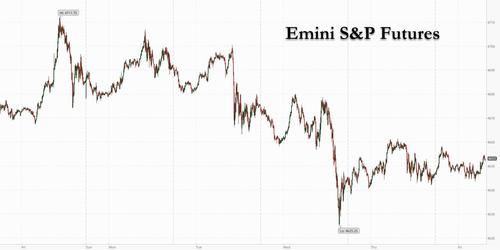1:02 pm

The SPX has reached one of its possible retracement values where Minute Wave [c] is equal to Wave [a] at 483.00. However, the Elliott Wave structure may not be complete and the 61.8% retracement is at 4685.02. In addition, Wave (v) of [c] is not yet complete. That calculation posits a top near 4687.00 sometime before 3:00 pm (hourly Cycle). The next support appears at the 50-day Moving Average at 4495.00. Good luck and good selling!
RealInvestmentAdvice observes, “Is cash a good hedge?” It’s a focus of a recent article discussing “fast” versus “slow” risk which examined the financial impact on equities and cash over long-term periods. To wit:
“The simplest analogy to differentiate between fast risk and slow risk is heroin vs. cigarettes. Heroin is a fast risk. Cigarettes are a slow risk. Heroin tends to kill people quickly (especially in the event of an overdose), while cigarettes tend to kill people slowly.
Stocks have lots of fast risks, but little slow risks. The S&P 500 could drop 20% tomorrow, but 30 years from now it’s likely to be much higher than it is today. On the other hand, cash has lots of slow risks, but little fast risks. Next year your dollar should be worth about the same as it is worth today. But 30 years from now? Not so much.” – Nick Maggiulli
The analysis is correct. The probability of being down 5% during a 20-year period is zero.”
7:55 am

Good Morning!
SPX futures ran up to the Max Pain level at 4665.00 in the overnight session. However, it may not be able to maintain it. This run-up may have been used by dealers to unload some longs, as there appears to be a drift toward negative gamma in today’s options expiration. Short-term support is at 4637.00, where open interest in spy puts (at 464.00) is 29,497 contracts to calls at 8,449. A breakdown beneath that support may be disastrous.
ZeroHedge reports, “U.S. equity index futures were slightly up at the end of a volatile week, trading in a narrow 20 point range for the second day in a row, while Treasuries resumed declines in response to the recent shock inflation data from the world’s largest economies.
Contracts on the three main U.S. gauges were higher, with Johnson & Johnson rising in premarket trading after saying it will split into two companies, while tech stocks again led gains at the end of a week scarred by deepening concerns over prolonged inflation. All the major U.S. indexes were set for a more than 1% weekly drop, their first since the week ended Oct. 1, as hot inflation numbers sapped investor sentiment and halted an earnings-driven streak of record closing highs. At 7:15 a.m. ET, Dow e-minis were up 106 points, or 0.3%, S&P 500 e-minis were up 8.5 points, or 0.18%, and Nasdaq 100 e-minis were up 40.25points, or 0.25%.”

VIX futures remain range-bound beneeath its triple resistance at 18.69. VIX has made a 52% retracement of its rally from the Master Cycle low. The next Master Cycle interval appears to arrive during the November options expiration, so this may be a very active month.

TNX remained above its Intermediate-term support at 15.59 over the Veterans Day break. The rally is likely to continue with only short pullbacks through the January options expiration.

USD futures pulled back to a morning low of 95.09 as it consolidates after two days of gains. It may pull back to the Cycle Top support at 94.82 before probing higher. This activity is mirroring a small pullback in TNX, as well. However, trending strength may return today or over the weekend. A possible target may be the 61.8% retracement of the decline from the March 2020 high at 103.96 at 98.30. This Master Cycle may have as long as three months to accomplish this.

The GSCI Ag Index continues its rally, gaining strength as it approaches November monthly options expiration. It is on shcedule to continue its rise through mid-December.
ZeroHedge observes, “The latest CPI figures from the U.S. this week showed meat prices are rocketing higher. Consumers are wondering when will rapid food inflation end. The world’s largest meat processor warned that labor shortages are crimping production growth, pushing prices higher, according to Bloomberg.
Brazilian company JBS S.A. has meat processing plants worldwide. One of its challenges is labor shortages in every developed country, resulting in limited production and increasing costs.
On Thursday, Andre Nogueira, head of JBS SA’s U.S. division, said the problem is most severe Stateside as labor shortages are expected to persist into the new year. He said the lack of workers also impacts operations in Europe, Canada, and Australia.
“Labor shortages are holding back production growth,” Nogueira said. “This is a key issue for the industry.” He added the shortages weren’t cutting into current production capacity, but the lack of workers inhibits the company’s ability to expand output if needed.”


